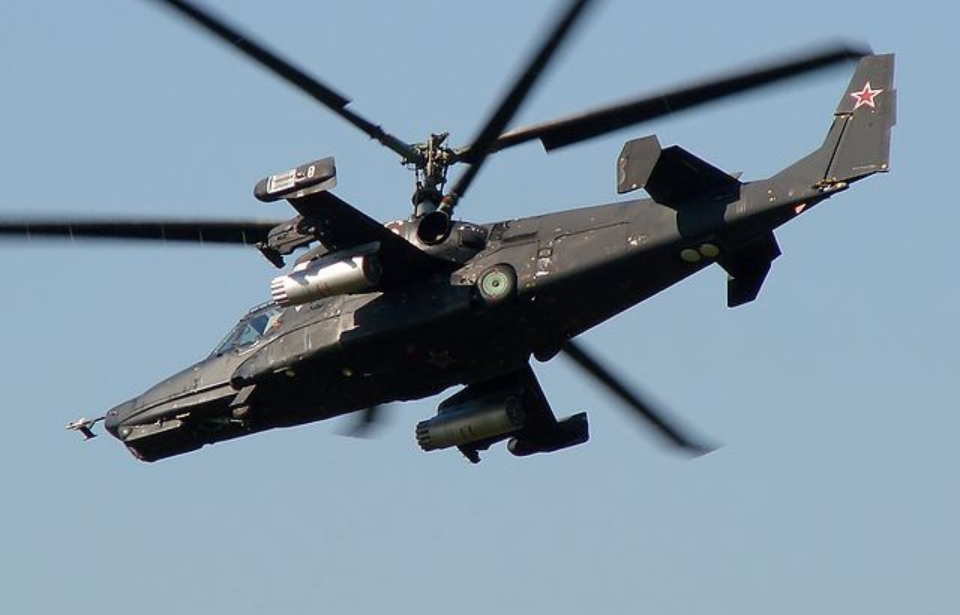The Kamov Ka-50 “Black Shark” is a Russian single-seat attack helicopter developed by JSC Kamov. The chopper entered service with the Russian Armed Forces in 1995, and has been equipped ever since. Along with its twin-seat variant, the Ka-52 “Alligator,” it’s most recently been deployed as part of the ongoing Russo-Ukrainian War.
Development of the Kamov Ka-50 ‘Black Shark’
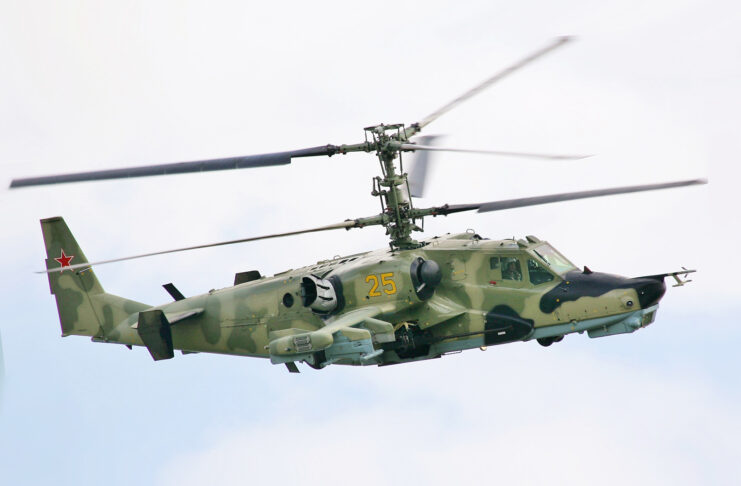
The Kamov Ka-50 “Black Shark” was designed in the 1980s. The first report of the helicopter’s development reached the West in 1984, with the first image appearing in ’89. The Ka-50 entered operational testing between 1985-86. During these trials, it was discovered that the pilot’s workload was similar to that of a fighter-bomber aviator, meaning they could perform both flying and navigational duties while solo.
As with most aerial vehicles, multiple prototypes were produced. The first two had fake windows painted on, which successfully misled early reports from the West. Some analysts believed the Ka-50 was being developed as an air superiority helicopter for hunting and taking out North Atlantic Treaty Organization (NATO) attack choppers, instead of its intended attack and scout jobs.
Interestingly, the fifth prototype of the Ka-50 played the titular role in the film Чёрная акула, which translates to “Black Shark.” This is how the production model received its ominous moniker.
Production was paused following the Soviet Union’s collapse
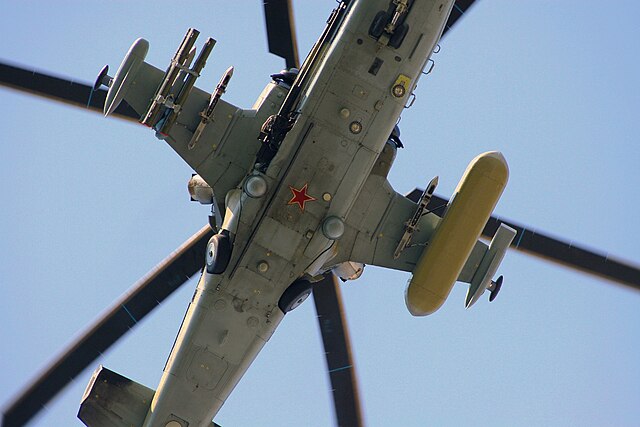
The Soviet Council of Ministers first ordered the production of the Kamov Ka-50 “Black Shark” in December 1987, with it adopted by the Russian Ground Forces in ’95.
While several hundred units were initially expected to be delivered to replace the Mil Mi-24, the collapse of the Soviet Union led to only a dozen leaving the manufacturing line. Production subsequently restarted in 2006. As of 2009, the Ka-50 came at a unit cost of $15 million USD. As of 2023, the Ka-52 “Alligator” variant has a cost of $16 million USD.
Design features of the Kamov Ka-50 ‘Black Shark’
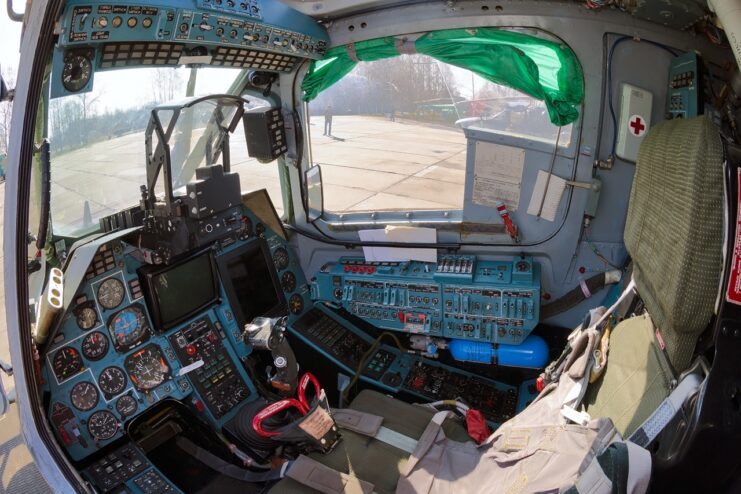
One of the most unique aspects of the Kamov Ka-50 “Black Shark” is its coaxial contra-rotating rotor system, which can be found on other Kamov products. This gives the helicopter an advantage by removing the need for a tail rotor, as the torque-countering tail rotor can use up to 30 percent of engine power. Furthermore, the system improves the chopper’s aerobatic qualities, enabling it to perform loops, rolls and “funnel” maneuvers.
The entire transmission is also comparatively tiny, making it a small target for ground forces.
The Ka-50 was the world’s first operational helicopter with a rescue ejection system, which allows pilots to escape at all altitudes and speeds. The K-37-800 rocket-assisted ejection system works by blowing the rotor blades away using explosive charges in the rotor disc and jettisoning the canopy before the ejection seat deploys.
The chopper is powered by two Klimov VK-2500 turboshafts engines. For self-contained operation, it also has an auxiliary power unit (APU). The Ka-50 can reach a maximum speed of 196 MPH, with a maximum range of 339 miles.
Equipped with devastating firepower
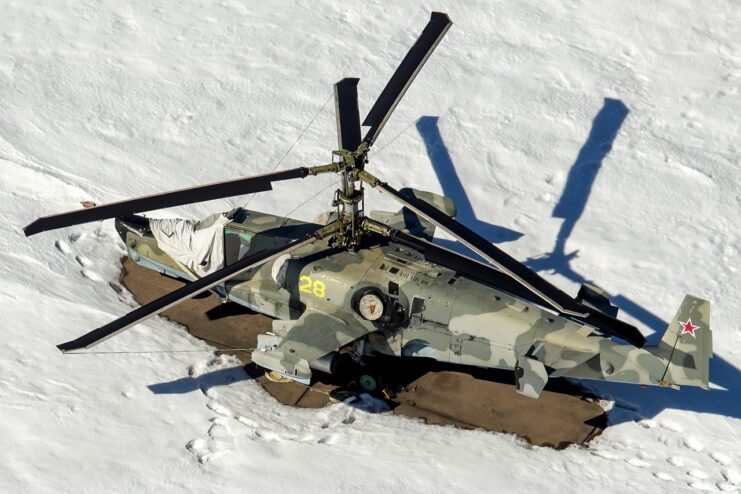
The Kamov Ka-50 “Black Shark” can carry a host of different weapons, up to a maximum load of two tons. These include anti-tank missiles, unguided aerial rockets, air-to-air missiles, guns and bombs. It also has mid-mounted wings that are fitted with four underwing suspension units and wingtip countermeasure pods.
On the helicopter’s two underwing external stores, up to 12 9K121 Vikhr anti-tank missiles can be mounted. It’s also equipped with a Shipunov 2A42 autocannon capable of firing 460 rounds of two types of ammunition, featuring an unrestricted azimuth and elevation range mounting for use against airborne and/or ground targets.
Kamov Ka-50 ‘Black Shark’ variants
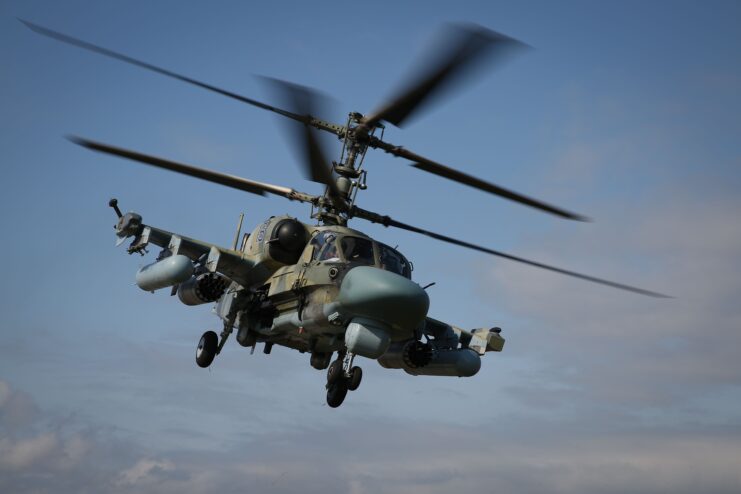
Many different variants of the Kamov Ka-50 “Black Shark” have been produced, including the Kamov Ka-50Sh, which features improved night-attack abilities, and the Kamov Ka-52 “Nile Crocodile,” an export model sold to Egypt.
One of the more famous variants, the Kamov Ka-50-2 “Erdogan,” was developed by Kamov and Israel Aerospace Industries in the late 1990s to compete in Turkey’s attack helicopter competition.
While the Ka-50-2 was the first variant to feature a tandem-seat cockpit, Kamov later designed another two-seat variant: the Ka-52 “Alligator.” This model is a reconnaissance attack helicopter capable of engaging armored and unarmored vehicles, manpower and aerial targets on the battlefield.
Put to the test during the Second Chechen War
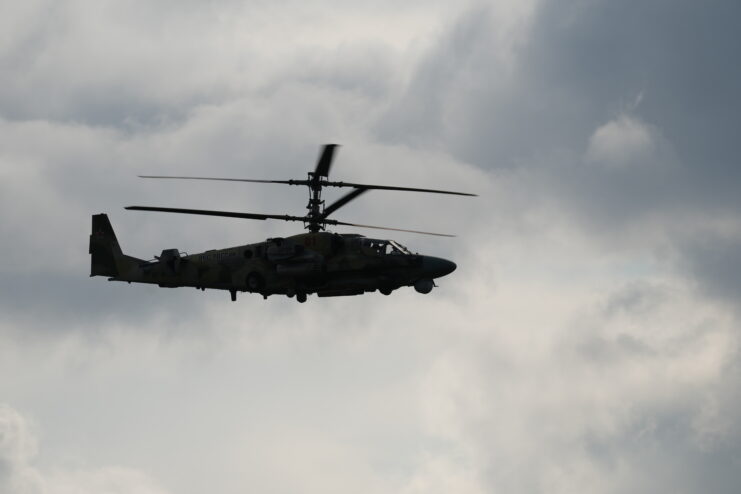
The Kamov Ka-50 “Black Shark” first took part in Russian operations during the Second Chechen War. A pair of production units arrived in the area in December 2000, and, on January 6 of the following year, the Ka-50 used live weapons against a real enemy for the first time.
Many of the advanced features of the Ka-50’s design were put to the test in difficult conditions during the Chechen War. These missions tested the airframe, on-board systems and armaments, and the helicopter’s performance confirmed its effectiveness.
Deployment during the Russo-Ukrainian War
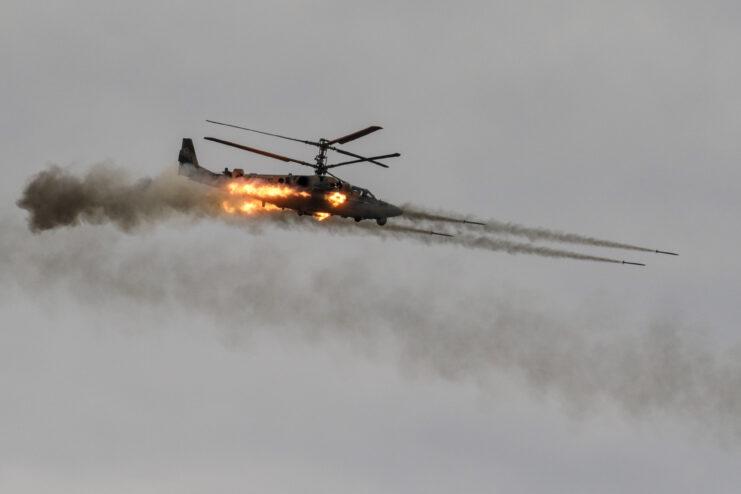
The Kamov Ka-52 “Alligator” has been used by the Russian military in the Russo-Ukrainian War. The helicopters have been used to defend against the Ukrainian counteroffensive; with an attack range of 9.3 miles using the LMUR missile, it can attack beyond the range of Ukraine’s air defenses.
More from us: Northrop YF-23: The Diamond-Winged Fighter That Couldn’t Out-Perform Lockheed’s F-22 Raptor
Want War History Online‘s content sent directly to your inbox? Sign up for our newsletter here!
However, Ukraine has fought back against the Ka-52. During the Ukrainian incursion into the Kursk region, one was destroyed. As of September 7, 2024, 61 units have been destroyed during the conflict.
